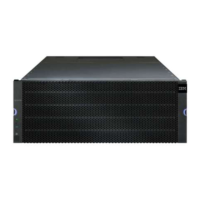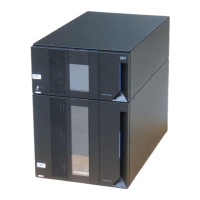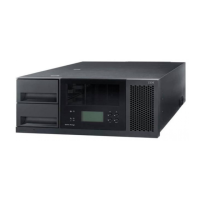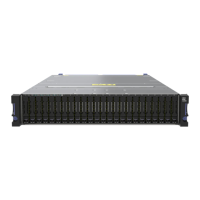[owner=(a|b) |
mapping=(none|default) |
T10PI=(none|enabled) |
(existingRepositoryLabel=existingRepositoryName |
newRepositoryCapacity=newRepositoryCapacityValue [KB | MB | GB | TB | Bytes]) |
repositoryMaxCapacity=repositoryMaxCapacityValue[KB|MB|GB|TB|Bytes] |
repositoryExpansionPolicy=(automatic|manual) |
warningThresholdPercent=warningThresholdPercentValue |
cacheReadPrefetch=(TRUE | FALSE)]
The diskPool parameter is the name of the disk pool in which you want to create a new thin logical
drive. If you do not know the disk pool names on the storage subsystem, you can use the show
alllogicalDrives summary command to get a list of the logical drives and the disk pools to which the
logical drives belong.
The userLabel parameter is the name that you want to give to the disk pool. The disk pool name can be
any combination of alphanumeric characters, hyphens, and underscores. The maximum length of the disk
pool name is 30 characters. You must enclose the disk pool name with double quotation marks (“ ”).
The capacity parameter defines the virtual capacity of the thin logical drive. The capacity is the value
that is reported to the host. As users add information to the thin logical drive, the physical size of the
logical drive increases. When you define the capacity of the thin logical drive you must define a capacity
of at least 32 GB. The maximum capacity that you can define is 63 TB.
The mapping parameter defines whether you want the storage management software to map the logical
drive to a host, or if you want to map the logical drive to a host at a later time. To allow the storage
management software to map the logical drive to a host use the default parameter. To map the logical
drive to a host at a later time use the none parameter. To map a logical drive to a host, use the set
logicalDrive logicalUnitNumber command.
The repository capacity is the actual physical capacity of the thin logical drive. The value that you use for
the repository capacity is the starting size of the physical component of a thin logical drive. When you
define the capacity of the repository must define a capacity of at least 4 GB. The maximum capacity that
you can define is 64 TB. You can use a small starting value for the repository. As data increases in the
repository, additional standard logical drives are added to the repository to increase the capacity. You can
either use an existing repository or create a new repository with this command. The repository capacity is
governed by these parameters:
v existingRepositoryLabel – Use this parameter when you want to associate the logical drive with an
existing repository logical drive.
v newRepositoryCapacity – Use this parameter when you want to create a new repository logical drive.
v repositoryMaxCapacity – Use this parameter to define the maximum size that you want for the
repository logical drive.
v repositoryExpansionPolicy – Use this parameter to define whether the repository logical drive
expands automatically or if you need to expand the repository logical drive.
The warningThresholdPercent parameter defines when you receive a warning that the repository logical
drive is nearing maximum capacity. The value for this parameter is percent of the maximum capacity of
the repository logical drive.
To turn on cache read prefetch, set the cacheReadPrefect parameter to TRUE.
Note: Thin logical drives do not use T10PI.
4-44 IBM System Storage DS3000, DS4000, and DS5000: Command Line Interface and Script Commands Programming Guide

